Class 10 History Chapter 2 Extra Question Answers - Nationalism in India
Short Answer Questions:
Ques 1: Explain the two different visions in opposing foreign domination in Vietnam.
Ans: The two visions were:
(i) Some intellectuals felt that Vietnamese traditions had to be strengthened to resist the domination of the West. Phan Boi Chau, a nationalist, supported monarchy and his first objective was to throw out the foreign enemy and restore the nation’s independence.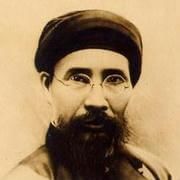 Fig: Phan Boi Chau(ii) Other nationalists like Phan Chu Trinh wanted to overthrow monarchy in order to create a basis for the promotion of popular rights. He did not want a democratic republic. He did not want wholesale rejection of Western civilisation and was influenced by Western ideas of liberty. He wanted the French to develop agriculture and industries besides setting up legal and educational institutions.
Fig: Phan Boi Chau(ii) Other nationalists like Phan Chu Trinh wanted to overthrow monarchy in order to create a basis for the promotion of popular rights. He did not want a democratic republic. He did not want wholesale rejection of Western civilisation and was influenced by Western ideas of liberty. He wanted the French to develop agriculture and industries besides setting up legal and educational institutions.
Ques 2: Explain any three steps taken by the French to achieve their aim to exploit the natural resources of Vietnam.
Ans: (i) The French built canals and drained land in the Mekong area to increase cultivation. The vast system of irrigation works, built mainly with forced labour, increased rice production and allowed export of rice to international markets. By 1931, Vietnam had become the third largest exporter of rice in the world.
(ii) The French followed rice production with infrastructure projects to help transport goods for trade, military garrisons and to control the whole region.
(iii) The construction of Trans-Indo-China rail network began to link northern and southern parts of Vietnam and China. The final link with Yunan was completed by 1910. A second line was built, linking Vietnam to Siam.
Ques 3: Explain any three steps taken by the French to solve the problem of plague in Vietnam.
Ans: (i) The French started a massive rat hunt in 1902.
(ii) The French offered the Vietnamese cash for catching the rats. Rats were caught in thousands, by May 30 alone 20,000 rats were caught, but the rat menace did not end.
(iii) The French paid money when the rat catcher showed a rat tail as proof of a rat killed.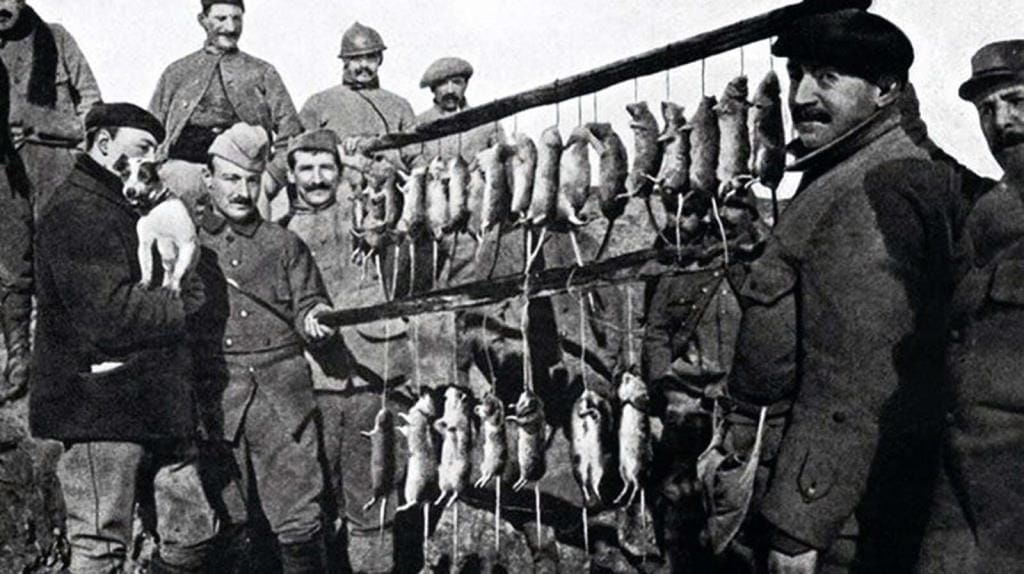 Fig: Rat Hunt
Fig: Rat Hunt
The Vietnamese had found an ingenious method of fooling the French. They cut off only the tails of the rats and let them loose with the result their population did not decrease. Some people even began raising rats for money. In the end, the French had to scrap the cash reward. The French had underestimated the intelligence of the local people who joined hands in fighting them. They cared only for the health and hygiene of their own people and it backfired on them.
Ques 4: Why did French policy-makers want to educate the people of Vietnam? Explain.
Ans: The French policy-makers wanted to educate the people of Vietnam, because they considered education as one way to civilise the “native”. They were convinced that Europe had developed the most advanced civilisation and they had to bring modern civilisation to the Vietnamese. They were driven by the idea of a ‘Civilising Mission’, and considered it their duty to bring modern ideas to the colony. It did not matter that this meant destroying local cultures, religions and traditions because in any case they were outdated and an obstruction to modern development. Another reason was that they needed an educated labour force.
Ques 5: ‘The US intervention in Vietnam proved costly to both US and Vietnam’. Explain.
Ans: From 1965 to 1972, over 3,403,100 US services personnel served in Vietnam. Even though the US had advanced technology and good medical supplies, casualities were high. About 47,244 died in battle and 303,704 were wounded. The war proved costly for Vietnam too. Thousands of US troops arrived equipped with heavy weapons and tanks barked by B.52 bombers. The widespread attacks and use of chemical weapons – Napalm, Agent orange, and phosphorous bombs – destroyed many villages and decimated jungles. Civilian casualities were very high.
Ques 6: Explain any three impact of Great Depression of 1930s on Vietnam.
Ans: Majority population of Vietnam depended upon Agriculture and Industry. By the rapid price decline of rubber and rice, economy fell down rapidly. This became the cause of rural debtness. Unemployment became the main problem of the nation. Social and economic status of the people fell badly.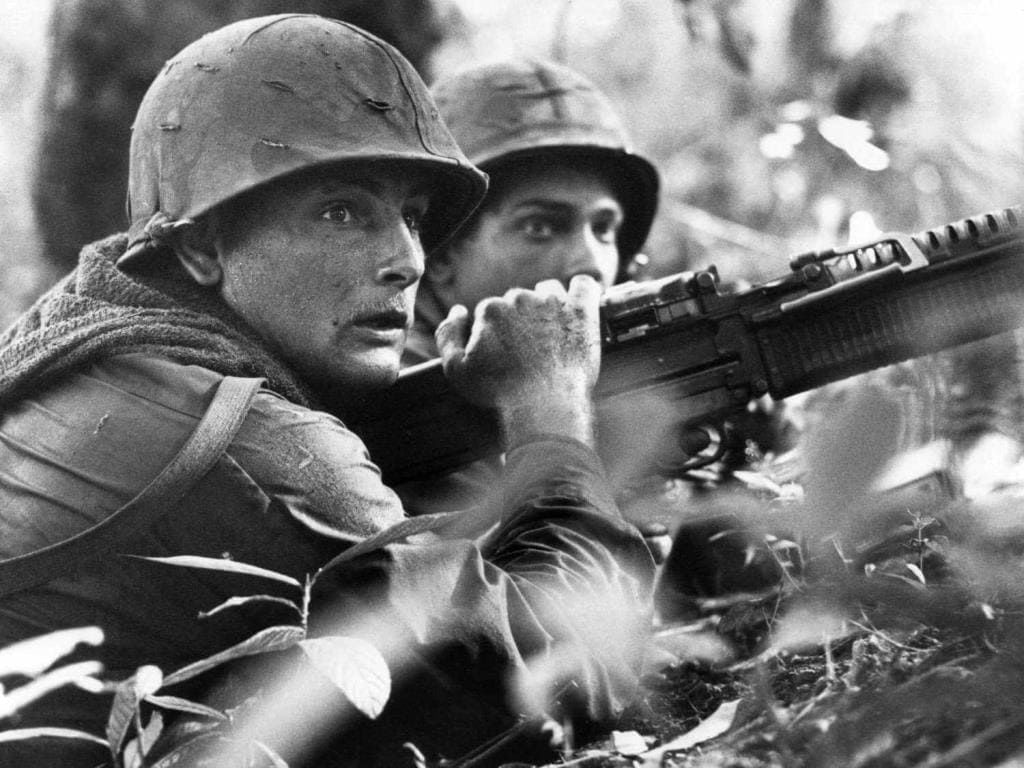 Fig: Great Depression - Vietnam
Fig: Great Depression - Vietnam
That worse economic condition gave birth to the rural uprising especially in the provinces of Nghe an and Ha Tinh. Thats why these provinces were known by the name of electric fuses. government took stern steps for the suppression of this uprising.
Ques 7: Who was Phan Chu Trinh ? How did he help in the modernisation of Vietnam?
Ans: Phan Chu Trinh was a Nationalist of Vietnam during 1871-1926. He helped in the modernisation of Vietnam by his deadly attitude against monarchy. He was a real admirer of Democratic Republic. He accepted the democratic ideals of the west and French revolutionary Ideal of liberty. His demand to the French government was to set up legal and educational institutions and give attention to the development of economy by the promotion of agriculture and industries.
Ques 8: “Early Vietnamese nationalists had a close relationship with Japan and China. Support your answer with three examples.”
Ans: Yes, early Vietnamese nationalist had a close relationship with Japan and China. These examples supported the statement –
(a) Vietnam’s religious beliefs were a mixture of Buddhism and Confucianism. Confucianism was given a Chinese thinker Confucius. He developed a philosophical system based on good by practical wisdom and proper social relationships. Though Buddhism, it was founded by an Indian saint in India, yet it prevailed prominently in China.
(b) The elites of Vietnam were educated in Chinese language.
(c) Phan Boi Chau met the Chinese reformer Lion’s Qichao in Yokohama (Japan). Phan’s most influential book “The History of the Loss of Vietnam” was written under the strong influence and advice of Qichao. So by this way Vietnam had close relations with Japan and China.
Ques 9: Who was Ho Chi Minh ? What was his contribution to Vietnam ?
Ans: Ho Chi Minh was a leader of Vietnam. He was born in the central part of Vietnam. He tried hard to brought together all competing nationalist groups of the nation. This results the Vietnamese Communist Party or Vietnam Cong San Dang cane into existence.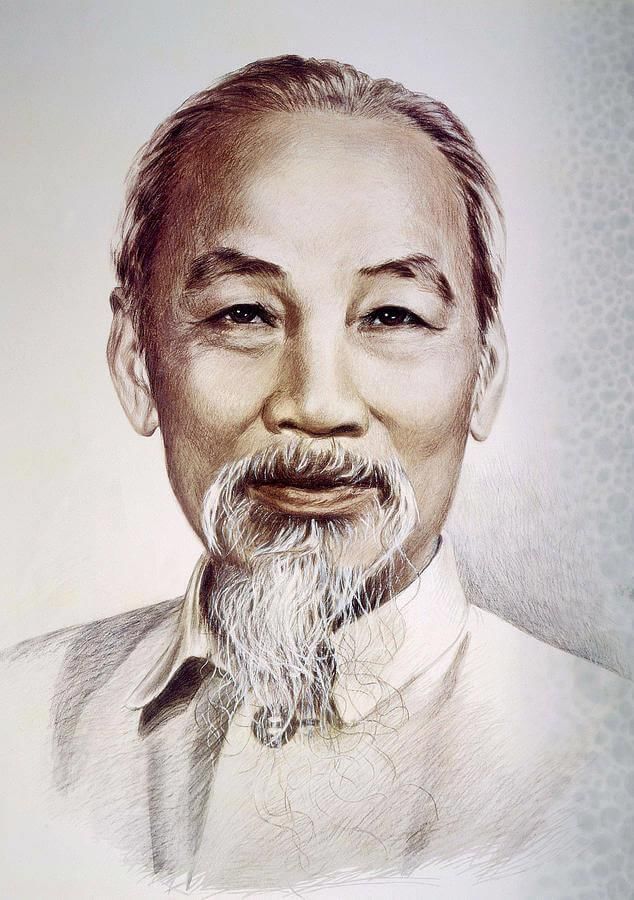 Fig: Ho Chi Minh Later on this party was known by the name of Indo-Chinese Communist Party. Ho Chi Minh was inspired by the militant demonstrations of the European Communist Parties. When Vietnam got independence, Ho Chi Minh became President of the Democratic Republic of Vietnam.
Fig: Ho Chi Minh Later on this party was known by the name of Indo-Chinese Communist Party. Ho Chi Minh was inspired by the militant demonstrations of the European Communist Parties. When Vietnam got independence, Ho Chi Minh became President of the Democratic Republic of Vietnam.
Ques 10: Write three main characteristics of Trieu Au, the rebel woman of Vietnam.
Ans: Trieu Au was one of the most venerated rebel women of Vietnam during the third century CE. She was an orphan and lived with her brother. She resisted Chinese occupation until her death. When she grew up she left home, went into the jungle and organised a large army. At last when her army was crushed she drowned herself instead of surrendering. After her death, she was worshipped as a martyr with a sacred image. Reason behind her worship was her dedication to and sacrifice for her nation.
Ques 11: What were the results of the colonization of Vietnam by the French?
Ans: French colonisation was not based only on economic exploitation. It was also driven by the idea of a civilising mission and claimed that they would introduce modern civilised life to the Vietnamese. Being a colony all the natural, essential and human resources of Vietnam were exploited. As a result agricultural productivity declined, which caused rural poverty and indebtedness. The social and economic status of Vietnamese declined because of that economic exploitation.
Long Answer Questions
Ques 1: Explain the reasons for the popularity of the ‘Go East Movement’.
OR
Explain any three objectives of the Vietnamese students of ‘Go East Movement’.
OR
Analyse four reasons for popularity of ‘Go East Movement’.
Ans: In the first decade of the 20th century, a ‘Go East Movement’ became popular in Vietnam.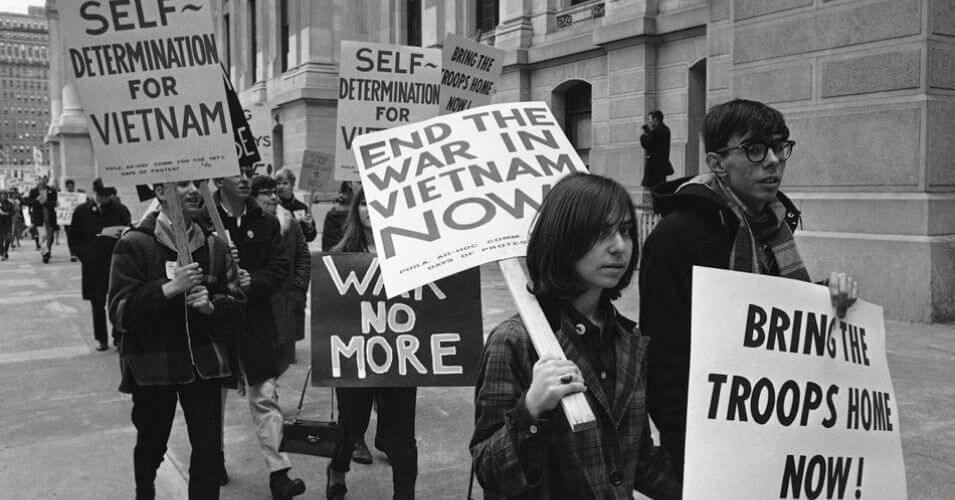 Fig: Go East Movement Early Vietnamese nationalists had a close relationship with Japan and China. It was for three reasons:
Fig: Go East Movement Early Vietnamese nationalists had a close relationship with Japan and China. It was for three reasons:
(i) they provided models for those looking for a change;
(ii) a refuge for those who were escaping French police, and
(iii) a location, where a wider network of Asian revolutionaries could be established.
In 1907-08, some 300 Vietnamese students went to Japan to acquire modern education. Their main aim was to drive out the French from Vietnam, overthrow the puppet government and re-establish the Nguyen dynasty that had been deposed by the French. They appealed to the Japanese as fellow Asians and asked for arms and help. Japan had emerged as a strong modern nation who could defeat the mighty Russia (1907) and resist colonisation. The Vietnamese students established a Resistance Society in Tokyo but, after 1908, the Japanese Government clamped down on them. Many, including Phan Boi Chau, were deported and forced into exile in China and Thailand. Go East Movement inspired the National Movement in Vietnam.
Ques 2: Explain any two contributions each of 'Scholars Revolt, 1868' and 'Hoa Hao Movement, 1939' against religious and social evils respectively.
OR
Mention any three features of the Hoa Hao Movement.
OR
Explain any three features of scholars Revolt in 1868 in Vietman.
Ans: (i) The Scholars Revolt (1868) : Many religious movements were hostile to the Western presence in Vietnam. The Scholars Revolt of 1868 was against the French control and the spread of Christianity. It was led by the officials of the imperial court. About 300,000 Vietnamese had been converted to Christianity. A thousand Catholics were killed in the Ngu An and Ha Tien provinces in the general uprising. The French crushed the movement, yet it served to inspire other patriots to rise against the French.
(ii) The Hoa Hao Movement (1939) : It was a religious movement against the French, led by its founder, Huynh Phu So. He performed miracles and helped the poor. He opposed the sale of child brides, gambling, the use of alcohol and opium. The French declared him mad and put him in a mental asylum. He was declared sane even by the French doctors in 1946. The French exiled him to Laos and sent his followers to concentration camps. These religious movements helped in arousing anti-imperialist sentiments.
Ques 3: Explain any four major challenges faced by the Democratic Republic of Vietnam.
Ans: The Democratic Republic of Vietnam faced a number of challenges:
(i) The French tried to regain control by using Emperor Bao Dai as their puppet.
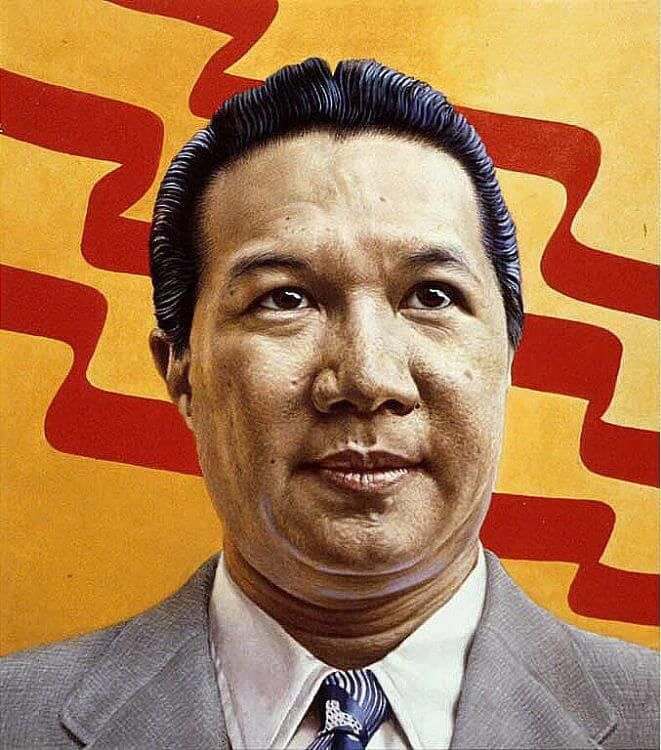 Fig: Bao Dai The Vietminh had to fight a war with France and were after eight years able to defeat the French in 1954 at Dien Bien Phu.
Fig: Bao Dai The Vietminh had to fight a war with France and were after eight years able to defeat the French in 1954 at Dien Bien Phu.
(ii) The peace negotiations at Geneva partitioned Vietnam into North and South Vietnam. This led to conflict as Bao Dai’s regime in the South was overthrown by Ngo Dinh Diem. His policies led to a war between North and South Vietnam.
(iii) Fearing communist triumph, the USA entered the war, sending in troops and arms. A costly war, costly for both sides, lasted from 1965 to 1972. It was a brutal war. The Democratic Republic suffered bombing and use of chemical weapons.
(iv) The Vietnamese were inspired to sacrifice for their country, their home and family life. They fought for independence, and their heroic resistance showed how the mighty USA had underestimated the power of this small country. They used their limited resources to great advantage. The Ho Chi Minh Trail is the biggest symbol of how they met the challenge of US intervention and finally united their country.
Ques 4: Explain the two different visions in opposing foreign domination in Vietnam.
Ans: The two visions were:
(i) Some intellectuals felt that Vietnamese traditions had to be strengthened to resist the domination of the West. Phan Boi Chau, a nationalist, supported monarchy and his first objective was to throw out the foreign enemy and restore the nation’s independence.
(ii) Other nationalists like Phan Chu Trinh wanted to overthrow monarchy in order to create a basis for the promotion of popular rights. He did not want a democratic republic. He did not want wholesale rejection of Western civilisation and was influenced by Western ideals of liberty. He wanted the French to develop agriculture and industries besides setting up legal and educational institutions.
Ques 5: Why did Bernard believe that the economy of the colonies needed to be developed? Explain any three of his suggestions made in the case of Vietnam.
OR
Who was Paul Bernard? Explain any two of his suggestions for the French colonists to develop vietnam.
Ans: Paul Bernard, an influential writer and policy-maker, strongly believed that the economy of the colonies needed to be developed.
(i) He argued that the purpose of acquiring colonies was to make profits. If the economy was developed and the standard of the living of the people improved, they would buy more goods. The markets would expand and the French business would make better profits.
(ii) Bernard believed that there were many barriers to economic growth in Vietnam. There was a high, rising population, low agricultural productivity and extensive indebtedness among peasants. To improve agricultural productivity and reduce rural poverty, it was necessary to carry out land reforms as the Japanese had done in the 1890s.
(iii) Only reforms could not ensure sufficient employment. Bernard wanted the French to follow the Japanese example by industrializing Vietnam and thus create more jobs. But the French, contrary to what Bernard suggested, did little to industrialize the economy and the standard of living declined in Vietnam.
Ques 6: Give any four features of the Ho Chi Minh Trail in the Vietnamese war against the US.
OR
What was Ho Chi Minh trail? What does it tell us about the Vietnamese war against the imperialist forces?
Ans: (i) Vietnamese fighters were transported via the Ho Chi Minh Trail. That was a network of footpaths and roads with which only the local people were familiar.
(ii) Women porters were used to carry material to support the fighters.
(iii) Cycles were frequently used to transport men and war material.
(iv) The trail had support bases and hospitals all along from north to south.
Ques 7: What were the differences of opinion between the two groups in Vietnam regarding the introduction of French Education System ?
OR
Explain any three limitations of French Education Policy.
Ans: There were two broad opinions on the question of introduction of French education system. Some policy-makers emphasised the need to use the French language as the medium of instruction. This group felt that the Vietnamese would be introduced to the culture and civilisation of France. This would create an ‘Asiatic France solidly tied to European France’. The educated people in Vietnam would respect French sentiments and ideals; recognise the superiority of French culture, and work for the French.
The second group was opposed to French being the only medium of instruction. They suggested that Vietnamese be taught in lower classes and French in the higher classes. The few who learnt French and acquired French culture were to be rewarded with French citizenship.
Ques 8: Explain any four challenges faced by the ‘New Republic of Vietnam’ after 1945.
OR
Explain any three challenges faced by the Democratic Republic of Vietman.
Ans: The new Vietnamese Republic faced many challenges after 1945.
(i) The French tried to regain control by using Emperor Bao Dai as their puppet. Faced with French offensive, the Vietminh were forced to retreat to the hills. After eight years of fighting, the French were finally defeated at Dien Bien Phu in 1954.
(ii) After the French defeat, the Vietnamese were forced to accept the division of the country. North and South were split. Ho Chi Minh and the communists took power in the North,while Bao Dai’s regime ruled the South.
(iii) This division turned Vietnam into a battlefield bringing death and destruction to its people as well as the environment. A coup by Ngo Dinh Dien overthrew the Bao Dai government. Bao Dai had outlawed Buddhism. The opposition united under the banner of National Liberation Front (NLF).
(iv) With the help of the Ho Chi Minh government in the North, the NLF fought for the unification of the country and a long battle with the USA.II
Ques 9: Explain the steps taken by the French in the field of education in Vietnam ? What was their motive behind this ?
Ans: (i) The Tonkin Free School was started in 1907 to provide a western-style education. This education included classes in science, hygiene and French.
(ii) School Textbooks glorified the French and justified colonial rule. The Vietmanese were told that they were ‘skilled copyists’ but not creative. They could not rule themselves. The schools encouraged adoption of western styles and western ideas.
FAQs on Class 10 History Chapter 2 Extra Question Answers - Nationalism in India
| 1. What was the nationalist movement in Indo-China? |  |
| 2. Who were the leaders of the nationalist movement in Indo-China? |  |
| 3. What were the major events in the nationalist movement in Indo-China? |  |
| 4. How did the French respond to the nationalist movement in Indo-China? |  |
| 5. What was the impact of the nationalist movement in Indo-China? |  |















